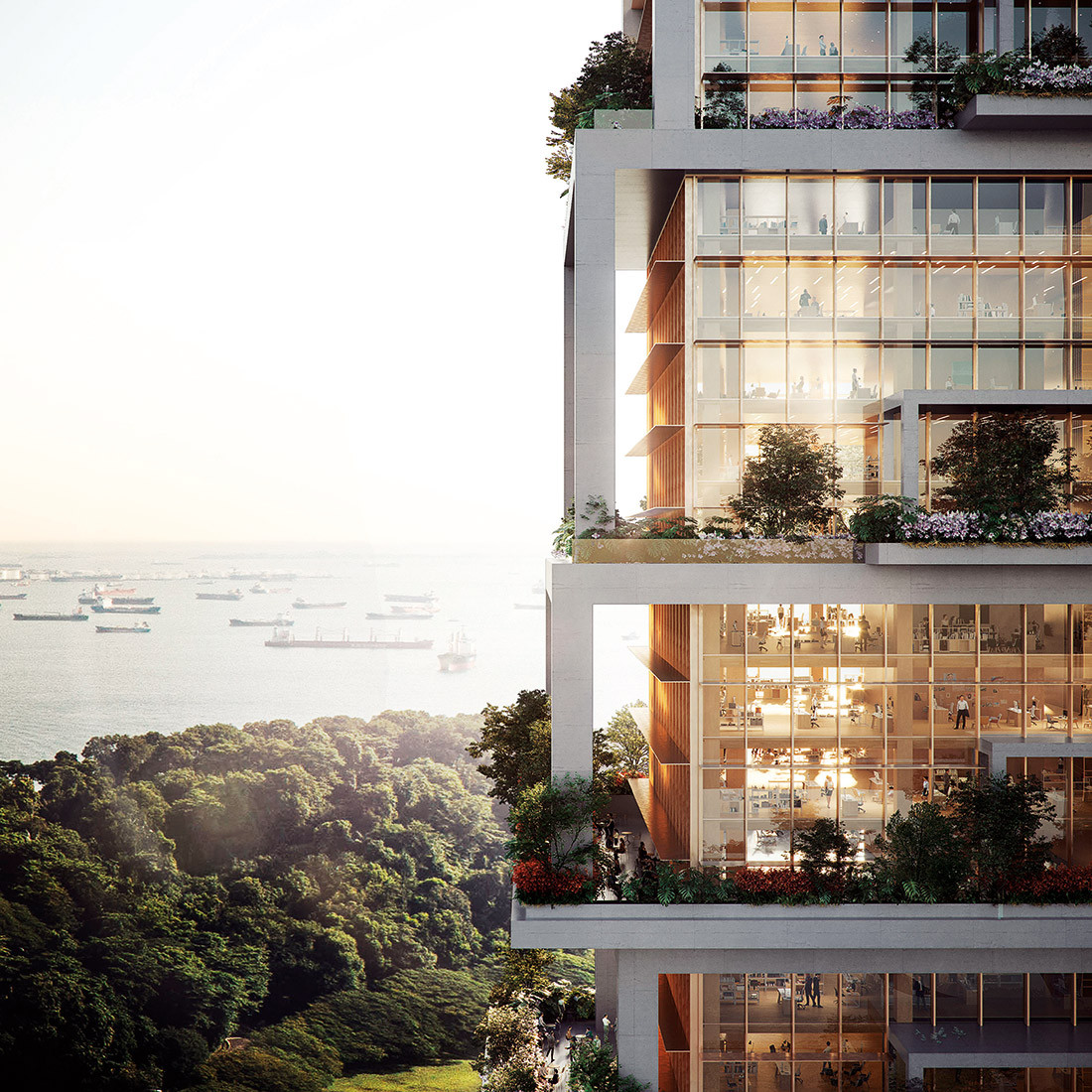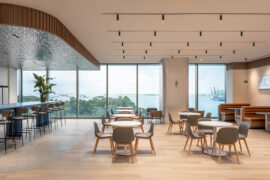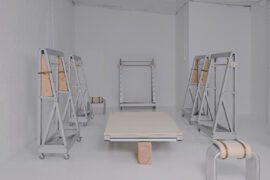Serie Architects’ founding principal Christopher Lee has single-mindedly designed with utmost consideration of the city and the cultural and societal norms that come along with it. The resulting works are thoughtful contributions to the cities they inhabit.

In his seminal writing The Architecture of the City, Aldo Rossi introduces the idea of the urban artefact – architecture or a fragment of a city that presents not just a common form, but also embodies a city’s history, culture, social structure and more. Arising from this was a call for architects to be sensitive to urban and cultural context, and to leverage enduring architectural precedents to inform their work.
To understand Rossi’s theory and proposition is to understand the work of Serie Architects. Its founding principal Christopher Lee not only teaches this at the Harvard Graduate School of Design as part of an in-depth 12-seminar series, but has applied it with equal rigour to the firm’s works.
“We always try to look at architecture that is dominant in a certain context and use it in our architecture, but not repeating it in all its totality. With this, one begins to create architecture that has a certain cultural and social connection to that place,” says Lee.

Without a typological precedent for a neighbourhood centre that brings together a polyclinic, shopping and other communal facilities, Oasis Terrace references the “common architecture” of HDB blocks. Photo by Hufton + Crow.
The goal is to design buildings that, while new, would feel familiar to the people who use it. Lee continues, “In this way, the architecture doesn’t solely belong to us as designers, but also to the people.”
The research-driven practice was founded in London and Mumbai, by Lee and Kapil Gupta. It was primed as a global practice from the very start and the lucid intellectual framework that Lee established has helped the growing firm work in different parts of the world with equal ease and clarity.
“We felt that once this intellectual framework is in place, it will then take on a life of its own and we would not need to dictate each and every line and gesture,” Lee explains, contrasting this with the alternative of having a house style that the practice adheres to.

The Singapore State Courts is a light and porous alternative to its usually heavy and solid counterparts without compromising on the complex and highly specific circulation requirements of court buildings. Photo by Finbarr Fallon.
In partnership with Multiply Architects, the Serie Architects now also has an office in Singapore – understandably so given the projects it’s been working on here after winning a slew of major competitions.
The National University of Singapore School of Design and Environment’s net-zero energy building SDE4 (read about the project in Cubes issue 95), the new-generation neighbourhood centre Oasis Terrace and most recently, the State Courts extension stand testament to the rigour and clarity of thought with which the practice operates.
A multi-programmatic space that consists of a polyclinic, a shopping mall, and communal facilities, Oasis Terrace takes its cue from the ubiquitous void decks of Singapore’s public housing and the repetitive grid and open corridors seen in HDB flats of the 60s and 70s. These are transposed into a main void-deck-like plaza, and a façade that’s reminiscent of an open verandah. Cradled in the centre of it all is a sloping green amphitheatre – the practice’s contribution to further what Lee calls the common architecture that is the HDB housing type.

Serie Architects’ proposed a carbon-neutral tower in Singapore for a major energy company. The core and structural frame of each stacked pavilion is made from steel while intermediate floors are constructed from a hybrid of steel and timber. Image: Serie Architects.
The newly completed State Courts extension also eloquently demonstrates the framework that the practice abides by. “We wanted to draw upon two persistent types of architecture that co-exist in Chinatown. One is the granularity of the shophouse, and just next to it, very tall high-rises. We wanted to bring these two moments together in a single gesture,” Lee explains.
The anchoring court tower can be read as a light and porous stack of ground planes, each one consisting of court boxes designed to the scale and height of a shophouse. The cladding of the court boxes echos the terracotta colour and texture of shophouse roofs that come into view when seen from a high-rise building.
A portico of sorts sits behind a façade of columns and orders on each plane, the composition a deliberate reference to the classical architecture of courthouses such as the former Supreme Court. The overall result is a familiar yet refreshing and wholly riveting interpretation of the high-rise tower.

Also central to the practice’s intellectual framework is the idea that buildings can and should be designed independent of programme. “We always try to make our architecture as an open framework,” Lee says. “We view our work as unfinished, in that different generations could take over and change the way they occupy the space but the architecture would still be coherent and robust.”
For example, Lee imagines that the State Courts extension could easily be converted into a vertical museum with little change required of the structure. Oasis Terrace could take in a variety of programmes without having its architecture affected at all. “[The buildings] have that organisational specificity and precision, but its programme could change completely.”
The work of Serie Architects is not only accommodating, but generous in its consideration of who the architecture serves and the evolution of a city. For Lee, the practice’s approach is the only responsible way to design in an age of rapid urbanisation. “The rate of urbanisation, especially in Asia, has been unrelenting. There’s a certain developmental fatigue that has set in where people feel that things are changing too fast,” he says.
“The least we could do is create architecture that is not alien to its surroundings. By drawing from architecture that people hold dear, we could regulate and slow down this rate of change that people feel so alienated by.”

Christopher Lee was part of the academic faculty at the Architecture Association (AA) before he founded Serie Architects with Kapil Gupta. He is currently Associate Professor in Practice at the Harvard Graduate School of Design.
INDESIGN is on instagram
Follow @indesignlive
A searchable and comprehensive guide for specifying leading products and their suppliers
Keep up to date with the latest and greatest from our industry BFF's!

Merging two hotel identities in one landmark development, Hotel Indigo and Holiday Inn Little Collins capture the spirit of Melbourne through Buchan’s narrative-driven design – elevated by GROHE’s signature craftsmanship.

Now cooking and entertaining from his minimalist home kitchen designed around Gaggenau’s refined performance, Chef Wu brings professional craft into a calm and well-composed setting.

In an industry where design intent is often diluted by value management and procurement pressures, Klaro Industrial Design positions manufacturing as a creative ally – allowing commercial interior designers to deliver unique pieces aligned to the project’s original vision.

At the Munarra Centre for Regional Excellence on Yorta Yorta Country in Victoria, ARM Architecture and Milliken use PrintWorks™ technology to translate First Nations narratives into a layered, community-led floorscape.

Bean Buro’s Singapore office for Anglo-Eastern is a poetic continuation of their Hong Kong headquarters — a workplace that balances identity and calm.

As the hospitality industry goes into a tailspin from the pandemic, hoteliers and designers alike are forced to reckon with the true value that hotels bring to guests.
The internet never sleeps! Here's the stuff you might have missed

Milliken’s ‘Reconciliation Through Design’ initiative is amplifying the voices of Aboriginal and Torres Strait Islander artists, showcasing how cultural collaboration can reshape the design narrative in commercial interiors.

Melbourne-based Studio Edwards has designed Shift+Space, a modular system under the banner of ‘adaptive retail architecture’. Ben Edwards tells us more.